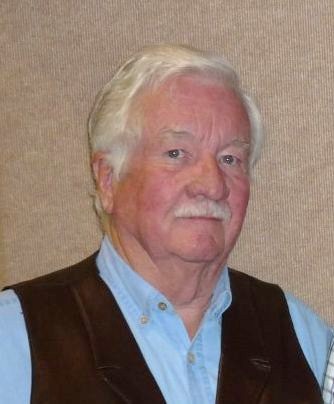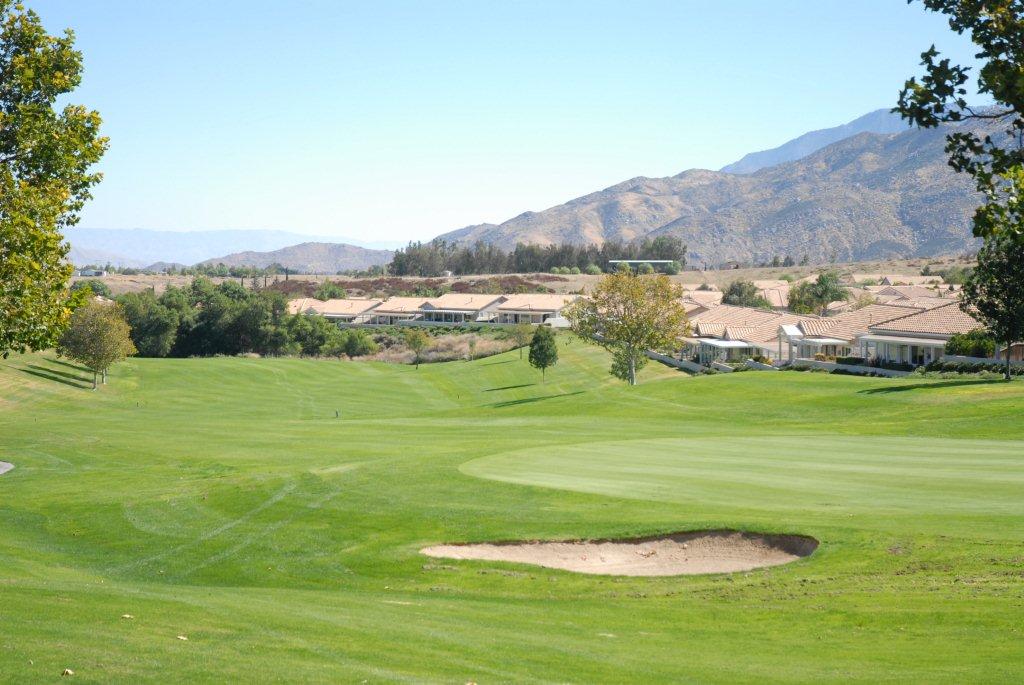“RECLAIMED WATER” – an analysis – Part 1 of 3
“RECLAIMED WATER” – an analysis – Part 1 of 3
by Lyndon Taylor
.
10/15/11 – The latest proposal out of City Hall in Banning deals with the use of reclaimed water to water the golf course and common areas of Sun Lakes. The plan calls for capturing the sewage outflow from that community and separating out the water for further processing.
The plant would be located some three-quarters of a mile from Sun Lakes (1320 yards away) and would serve to “process” the sewer water to a form suitable for watering the grass at Sun Lakes.
On the surface this sounds like a reasonable idea; recapture the water from sewage and use it again to water grass. But a closer look reveals at least three major factors that are worthy of a second look. The first of these is what is the impact of the reclaimed water on the golf course and surrounding vegetation? Second, what is the chemical and biological composition of the reclaimed water and what is the likely impact on the health and well-being of the inhabitants of Sun Lakes? Third, what are the financial implications of this proposal; a cost-benefit analysis is in order to determine if it makes financial sense to spend $20,000,000 to $35,000,000 on the processing plant?
 In future articles we will explore each of these topics, for now, let’s examine what has been said about the use of reclaimed water on golf courses.
In future articles we will explore each of these topics, for now, let’s examine what has been said about the use of reclaimed water on golf courses.
Let’s start by turning to an expert in the field of golf course management; John Zupancic is the founder of SoilQuest International in Dodge City, Kan. He is an independent agronomist and consultant for the golf-course industry. Here’s what he has to say about the use of reclaimed water on golf courses:
“When it comes to water quality, water-treatment professionals do not speak the same language as those of us in the green industry. Wastewater people talk about biological oxygen demand (BOD), turbidity and bacterial counts while we horticultural types are concerned about electrical conductivity (EC) and sodium adsorption ratio (SAR).
.
BEWARE OF SALINITY
Salinity issues cause the biggest headache for us. Total salts can include calcium, potassium magnesium and sulfate and sodium chloride. The osmotic effect that they have on plants as they accumulate in the root zone is a problem as well as the negative, sealing effect that sodium has on soil structure and permeability. Raw, fresh water may already contain salts of calcium, magnesium or sodium-and it picks up more as it travels through a municipal water system. Sometimes fresh water is immediately adulterated as it is “softened” with soda ash (sodium carbonate) to decrease hardness or to remove iron and manganese. This process raises the pH to 8.5 (or more) and substantially increases the sodium and bicarbonate content while precipitating calcium and magnesium.
.
PASS THE SALT
Unfortunately, the waste-water-treatment process usually does not deal with inorganic salts. It is designed to remove solids, decrease organic matter and disinfect.
None of these steps diminish either the total salinity or the sodium content of the water. In fact, the total salinity of municipal water can increase by as much as threefold from the fresh-water source to the final effluent. The SAR may increase by a factor of 5 to 10 times.
You may find soggy turf on some golf courses irrigated with reclaimed water because the superintendents apply extra irrigation water to leach salts through the root zone. It is common to apply a leaching fraction of 15 to 20 percent more water than the turf needs to meet evapotranspiration demands.
As salts accumulate in the root zone over time, you may be forced to change turf species. Poa annua golf greens perform poorly under saline conditions. On some courses, the superintendents replaced Bermuda grass-which is fairly salt tolerant-even more salt tolerant with paspalum. You may need to replace sensitive trees and ornamentals due to increased salinity or toxicity from boron and chlorides.
The osmotic effect that they have on plants as they accumulate in the root zone is a problem as well as the negative, sealing effect that sodium has on soil structure and permeability. Raw, fresh water may already contain salts of calcium, magnesium or sodium-and it picks up more as it travels through a municipal water system.
.
SAVINGS AND COSTS
Your savings from reclaimed water use can be offset by increases in retrofitting, cultivating and amending soils. Some golf courses now deep-tine aerate all irrigated turf up to twice a year. They also incur expenses for gypsum applications and acid-based water treatment.
Retrofitting your irrigation system can be expensive. You must seal off cross connections between potable and reclaimed water and install back-flow valves at various locations. You’ll often need intake filters to prevent algae and suspended solids from clogging nozzles.
.
WARNINGS AND PRECAUTIONS REGARDING EXPOSURE
You should use only potable water near homes, clubhouses and greens, so you must have two separate systems. In these cases, mark quick couplers and new-pipe installations with purple to indicate that reclaimed water is in use. You’ll need signs in English and Spanish around the property warning people not to drink the water.
Operators of inefficient or low-capacity irrigation systems face a dilemma due to concerns about exposing the public to potential pathogens because cities often restrict sprinkler irrigation to times when the public is not present. Local health regulations normally limit sprinkler irrigation only to the nighttime hours-commonly 8 to 6. Thus, the irrigation system must be capable of completing its cycle within 8 to 10 hours. If you want to irrigate during the day-to cool turf or dissolve a fertilizer-then someone must physically man the control box and ensure no one is nearby. Larry Stowell, a certified professional agronomist with Pace Consulting (San Diego, Calif.) says, “I feel sorry for low-budget courses that cannot afford the assistance that may be needed to effectively manage these resources.” Stowell recently reviewed some of the challenges at various California golf courses and is well aware of the need for a higher level of management. He recently assisted Big Canyon Country Club (Newport Beach, Calif.) in developing a contractual agreement with the Orange County Water District.
That contract binds the city of Newport Beach to pay for some of the retrofitting at the club. It outlines a minimum quantity of reclaimed water that the club must use annually and the city’s capability to deliver it at the needed rate in gallons per minute. Then it specifies maximum water-quality parameters for EC, total dissolved solids (TDS), SAR, adjusted SAR (SARa), bicarbonate, boron, chloride and sodium. If the effluent exceeds these limits for an extended period, the club retains the right to disconnect from the reclaimed water supply and use potable water until the city corrects the problem. The contract also includes provisions for further reimbursement by the city if damage occurs on the golf course. Stowell regrets that they were not able to tie the price to quality, stating, “Negotiations on price and quality should begin early. What other commodity can you imagine where price is not related to the quality of the product delivered?”
He fears that, in the future, we will see litigation throughout the country over these issues based on an implied warranty. In fact, a Texas farmer who used reclaimed water for years recently filed a $2 million lawsuit against a municipality and a beef packer over damage to his land. The case was settled out of court.”
For the Sun Lakes golf course operation, this could mean the additional expense of using 20% more water for watering the golf course, potential problems with soil chemistry, problems with sprinklers and irrigation systems, possible replanting of the grass, and increased maintenance costs to maintain the proper soil nutrient balance and pH (acid versus base) balance of the soil. Aside from the costs associated with the reclaimed water itself, these will be extra “hidden” costs that the Homeowners must pay to maintain their golf course.
Clearly, there is a need for further exploration of this concept from the standpoint of the operation of the Sun Lakes Golf course and common areas.
The use of reclaimed water also has health implications, particularly if used in proximity to homes around the golf course and the common areas. We will explore those points in part 2 and 3 of this article.
.
Lyndon Taylor is a Sun Lakes resident and former City Council candidate. In 2009 he was a driving force in Banning’s successful “Anti-Sludge” petition drive. Taylor holds a Bachelor’s Degree in Environmental Biology with a minor in Chemistry ,a Master’s Degree in Biochemistry and a PhD in Planning and Management If you would like to comment or discuss this – or any other – article, please visit us on FACEBOOK
If you would like to comment or discuss this – or any other – article, please visit us on FACEBOOK

